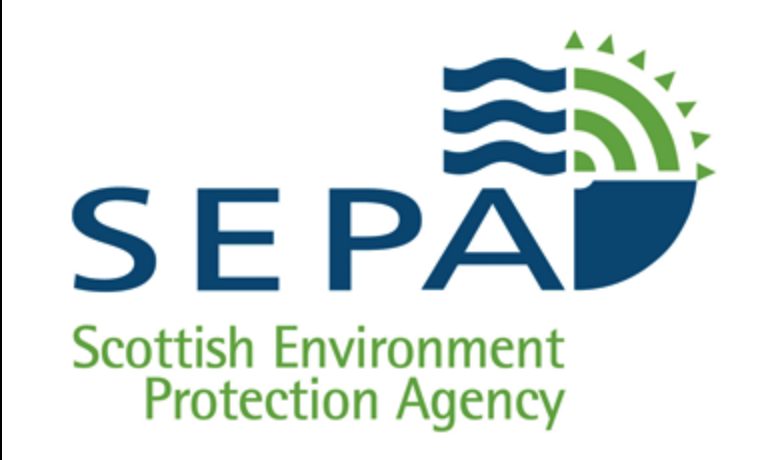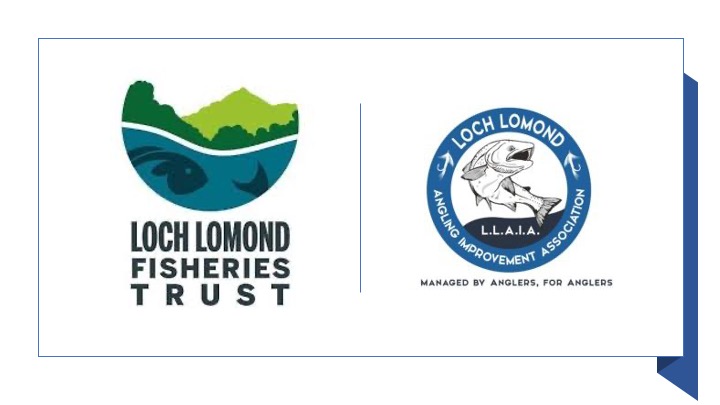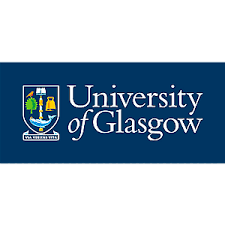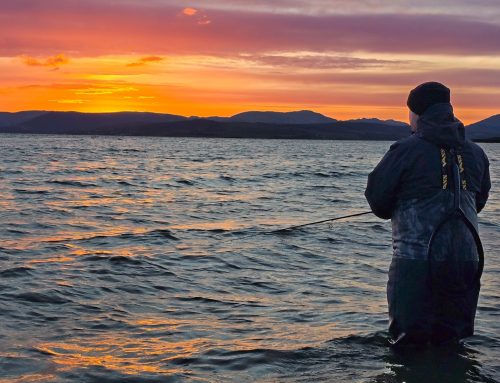

The need for a collaborative approach and plan.
Foreword
The pressures facing our wild Atlantic Salmon today have probably never been greater where they face increasing threats both at sea and within our rivers and loch. As an association we have little to no direct influence or control concerning those threats our salmon face whilst at sea, other then actively opposing further local marine developments that may present a threat such as salmon aquaculture which as an association we oppose when applicable.
The greatest influence or impact that we as an association can have is to identify and try to address or reduce as many of those local pressures relating to our catchment that Salmon and Sea Trout now face. To do so however requires significant resource, money, knowledge and skills which as an association alone we simply do not possess. If we are to make any further meaningful improvements it is vital in my opinion that we form strong partnerships with other like minded organisations and stakeholders including the Loch Lomond Fisheries Trust, the Vale of Leven and District Angling Club, landowners, local businesses and the community as well as key government agencies.
I see development of a strong, successful close working relationship with those key organisations and stakeholders as critical. In particular greater alignment and working with our sister organisation the Loch Lomond Fisheries Trust (LLFT). I believe that continuing and improving this relationship is extremely important if we are to make any real impact or difference. Funding of course is likely to be a major challenge but by working together and understanding and leveraging all appropriate funding sources for each project priority then hopefully funding can be identified.
Before anyone raises the subject, I am only too aware of the ‘historical’ differences between the LLAIA and the LLFT. For those who know me they will know that I place little value on all the long past failings and tales of historic wrongdoings and politics. To the contrary I am far more interested in what we have in common and what can be achieved going forwards. For myself the only value in looking backwards is extracting what can be learned from that period, particularly from earlier errors or mistakes and leaving the rest behind.
The need for collaboration
A key focus for the LLAIA that was shared at this year’s 2024 LLAIA Annual General Meeting was to
- increase the collaboration and working between the LLAIA and the Loch Lomond Fisheries Trust.
The other two highlighted key focus areas identified are to
- strengthen our committee’s capacity and resource by encouraging new members to volunteer their time and skills.
- increase the awareness of the focus and work done by the committee and it’s volunteer
We need to build upon the good work that the association has been doing to date such as further progressing and addressing the findings of the research and report by the Scottish Centre for Ecology and the Natural Environment (SCENE), Glasgow University which your association sponsored. Some of the projects that emanated from this study including barrier easement work on several tributaries of the River Fruin are already in flight but many others have yet to be planned and delivered.
It should be noted that improvement projects are in addition to the significant operational day to day work in managing and protecting the system. Such work includes managing our bailiff team and retail operations, responding to pollution and fish rescue events and raising required objections to all planning applications that may impact our catchment to name but a few. We wish to do more of course and to do so then there is a need for increased resources and for closer working with our partners and key stakeholders. Many will have seen the recently published calls for volunteers to come forward to provide additional resource, skills and experience. Thank you to those individuals that have responded so far to offer some of your time and support going forward.
When you consider the objectives, roles and ambitions of both the LLAIA and the Loch Lomond Fisheries Trust (LLFT) it is evident that both organisations share much in common in terms of their passion, desire and intent to protect, conserve and improve the wonderful Lomond system. Given the increasing pressures and threats facing our system, it’s wildlife and their habitat then it makes sense for both organisations to collectively work even more closely together. Both organisations posses significant strengths, knowledge and expertise which, if further leveraged and focussed, can deliver the best possible outcomes for conserving, protecting and improving our beautiful catchment. If we talk about collaboration then this means we must firstly agree and then jointly devise a plan to identify and tackle the key priorities by leveraging our combined skills, knowledge, contacts and resources.
As a founding member of the LLFT, the LLAIA already has a long standing relationship with the LLFT and enjoys a 50% share of trustee positions together with trustees from local riparian landowners. In recent years the LLFT and their team of biologists have worked tirelessly to both monitor and to improve the health of our system delivering many important habitat improvements across the catchment. However it is generally accepted that there is a need for a wider more structured and focussed approach that is directly aligned to each of the current pressures on our precious Atlantic Salmon. As a Trust the LLFT with their Team of qualified biologists are a key asset and are formally recognised by key Scottish Government agencies including Fisheries Management Scotland and Marine Scotland.
As previously stated, the association already have some key improvement projects which practically demonstrate the benefits of collaboration between the association and the trust. These key projects were originally defined and engineered by Scott Sinclair – LLAIA Treasurer. These projects are now being jointly managed and delivered with the help of the LLFT. Both of these initial joint projects are concerned with removing or alleviating barriers to migration of fish up and down some of the tributaries to the River Fruin. Whilst these are relatively small projects in themselves they serve to demonstrate what collaboration and joint working between each organisation and other stakeholders can achieve. However there is much more improvement work to be done with time not in our favour.
On Saturday 20th April the LLAIA and the LLFT met around the table in order to undertake initial discussions and consultation concerning the priorities, pressures and threats currently facing our catchment with the ultimate goal of establishing a joint management plan for the catchment for the next 3-5 years.
Some will be aware of the Scottish Government’s “Wild Salmon Strategy and Implementation Plan 2023 – 2028″ which provides a framework for all fisheries managers , DSFBs and trusts to address the various pressures that our wild Salmon face locally. The Scottish Government Wild Salmon Strategy lists ‘thirteen different potential local ‘pressures‘ that salmon face in most catchments to aid fisheries managers, trusts and boards to develop appropriate actions plans in relation to each ‘pressure’.
Within the The Scottish Government’s “Wild Salmon Strategy and Implementation Plan 2023 – 2028″ the thirteen individual ‘pressures’ are identified;
- Exploitation
- Predation
- Disease and Parasites
- Sea Lice
- Genetic introgression
- Invasive non-native species (INNS)
- Water quality
- Water quantity
- Thermal habitat
- Instream and Riparian habitat
- Obstacles to fish passage
- Marine development
- High seas
Here is a link to Scottish Government Wild Salmon Strategy : Implementation Plan 2023-2028
Broadly speaking any resultant LLFT/LLAIA catchment management plan should address the following key areas;
- The Lomond Catchment – overview
- The specific local Pressures and priorities facing wild Atlantic Salmon within each area of the Lomond catchment
- The corresponding actions in relation to each of the identified pressures (What/Who/When)
- Resource Plan
- Governance and Reporting Process
- Stakeholder Engagement Plan
- Community awareness and engagement plan
Whilst this is a key piece of work that myself and the LLAIA have been pushing for, it’s early days and we are at the very start line with much still to do here in order to put ‘meat on the bones’ in order to deliver a robust plan that is aligned to identifying and addressing each key pressure facing our system. However this initial collaboration and consultation is very welcome and encouraging, we will be working during the coming weeks to get a draft version of the catchment plan agreed and completed at the earliest date.
Having a plan in itself will not necessarily result in success as there are many dependencies and requirements including resources, finance and support to be addressed and overcome if each acrtion or project is to be delivered.
Other success factors will include the very important requirement to engage the support and assistance with all of the other valuable key stakeholders including landowners, the Vale of Leven and District Angling Club (VOLDAC), SEPA, LLTNPA, Fisheries Management Scotland, Marine Scotland, Scottish Water and many others.
The intent here is to have a draft plan for consultation and review within the next six to eight weeks with the plan to publish the agreed final plan by Autumn of 2024. Once finalised the management plan will form the basis for regular review and progress reporting. My personal view would be that once a draft plan is agreed that this draft plan should be circulated more widely for awareness, consultation and comment.
We will of course keep you updated as to progress here so as to keep you all informed and aware of this important work.
Should you have any questions or wish to provide input or support then please do contact your committee at chairman@lochlomondangling.com
Colin Liddell
Chairman LLAIA


![]()









